Introducing ABA Therapy as a Catalyst for Educational Engagement
Applied Behavior Analysis (ABA) is a scientifically grounded approach that has revolutionized the way children, especially those with autism spectrum disorder (ASD), learn and develop. Rooted in the principles of learning and behavior, ABA focuses on understanding the ABCs—antecedents, behaviors, and consequences—to shape positive behaviors and facilitate skill acquisition. Its adaptable, individualized nature makes it a powerful tool to promote not only skill mastery but also a genuine enthusiasm for learning, setting the foundation for lifelong educational success.
Understanding ABA Therapy and Its Role in Cultivating a Love for Learning
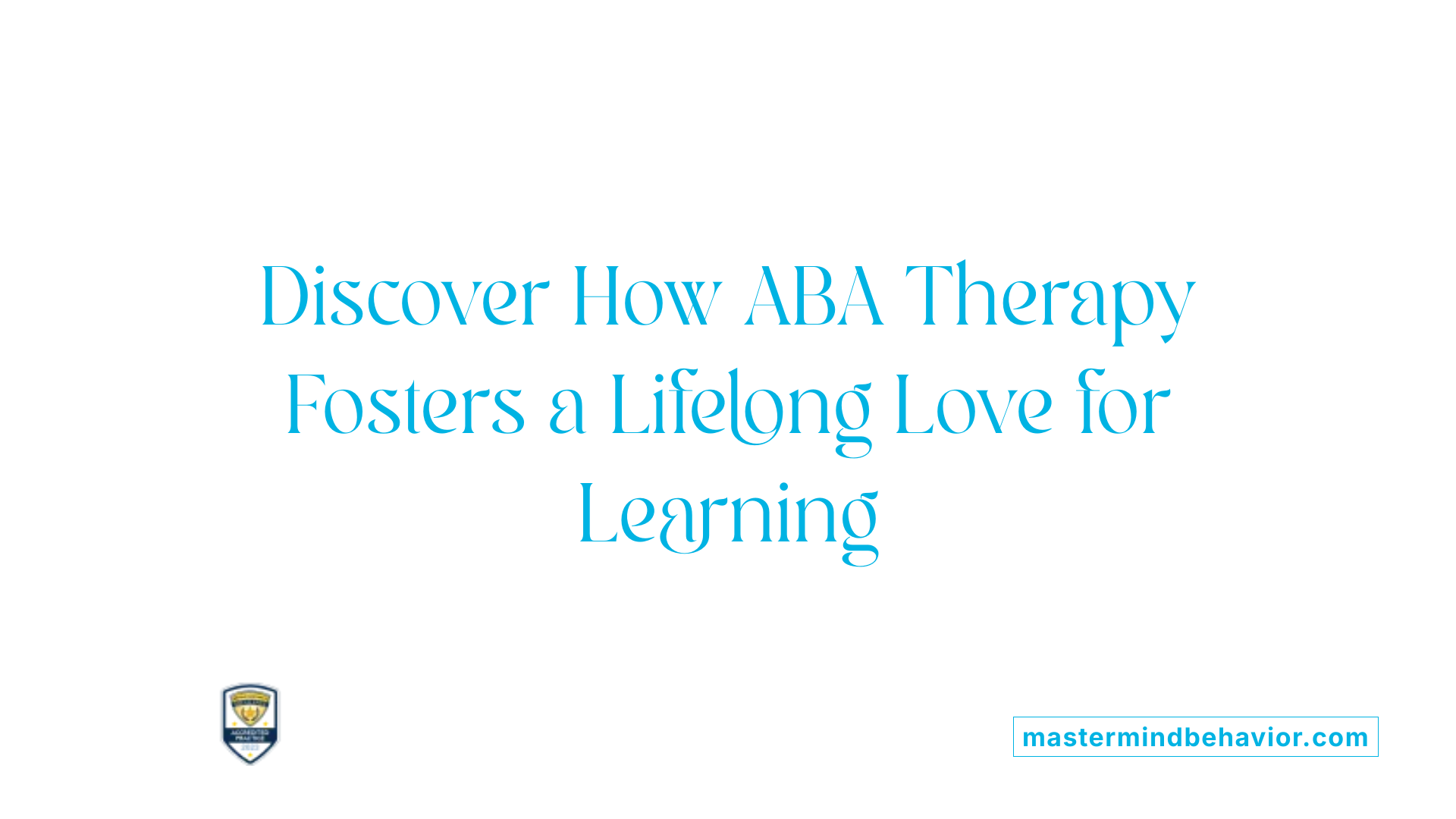
What is ABA therapy and how does it foster a love for learning in children?
Applied Behavior Analysis (ABA) therapy is a scientifically validated approach that teaches new skills and reduces challenging behaviors in children, especially those with autism spectrum disorder (ASD). Rooted in the science of learning and behavior, ABA examines how behaviors are influenced by environmental factors and uses this understanding to promote positive development.
In ABA, therapists analyze what triggers certain behaviors, how children respond, and what consequences follow. This understanding helps create tailored strategies that encourage desirable behaviors through positive reinforcement—rewards like praise, stickers, or tokens that motivate children to keep practicing skills.
ABA programs are personalized to match each child's unique strengths and challenges. Trained professionals, such as Board Certified Behavior Analysts (BCBAs), oversee these programs, making sure that goals align with the child's needs. Family members are often involved, practicing skills at home and in various environments to support generalization.
To facilitate learning, ABA breaks down complex skills like communication and self-care into small, manageable steps. Teaching methods include visual aids, prompting, and consistent reinforcement, making learning engaging and relevant. For example, children might learn to greet a friend or brush their teeth through step-by-step routines that build confidence.
By transforming educational activities into fun, meaningful experiences, ABA nurtures a child's curiosity and motivation to learn. When children see that learning is rewarding and connected to their interests, they naturally develop a love for acquiring new skills and exploring their world.
Techniques and Methods That Promote Educational Engagement in ABA
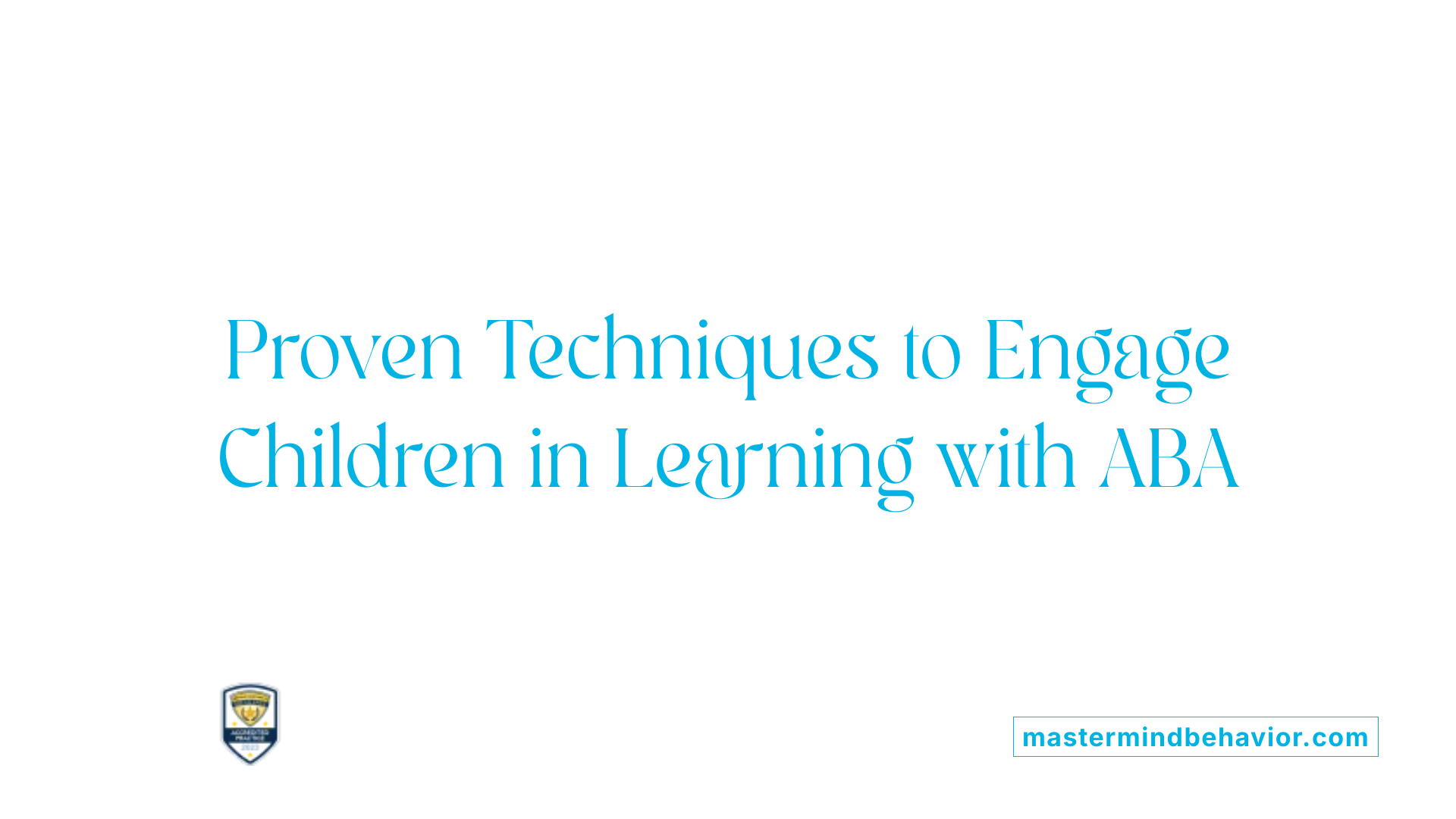
What techniques and methods does ABA therapy employ to support educational engagement?
ABA therapy uses a range of strategies designed to increase a child's participation and learning in educational settings. These methods are both structured and naturalistic, tailored to each child's needs and environment.
A central technique is Discrete Trial Training (DTT). This method involves breaking down complex skills into small, manageable steps. Each step includes clear prompts and positive reinforcement, guiding children through learning processes in a repetitive and predictable manner. DTT helps improve skills such as communication, social interaction, and self-care.
In addition, Natural Environment Teaching (NET) plays a vital role. Unlike traditional structured teaching, NET encourages learning through everyday activities and interactions. It promotes the generalization of skills by integrating learning into real-life situations, such as playtime or community outings. This method helps children transfer skills learned in therapy to their daily routines.
Visual supports like picture schedules, social stories, and visual cues are frequently used to enhance understanding and reduce anxiety. These tools provide visual clarity about routines, expectations, and social skills, fostering independence and engagement.
Behavior assessments, particularly Functional Behavior Assessments (FBA), are crucial for understanding the causes of challenging behaviors. They inform the development of Behavior Intervention Plans (BIPs) that tailor strategies to prevent problematic behaviors and promote positive ones.
Reinforcement strategies, especially positive reinforcement, are at the core of ABA. Rewards such as praise, tokens, or preferred activities motivate children to participate actively. Social skills are often taught through role-playing and natural interactions, reinforcing desired behaviors in realistic contexts.
Creating an encouraging learning environment involves environmental modifications, structured routines, and consistent data collection. By gathering detailed progress data, therapists can monitor a child's development and adjust interventions as needed.
Collectively, these techniques foster a supportive educational atmosphere where children are motivated, involved, and capable of acquiring essential skills for independence and social participation.
Supporting Parents and Caregivers in Promoting a Love for Learning through ABA
How can parents and caregivers use ABA principles to support their children's development of a love for learning?
Parents and caregivers are instrumental in fostering a positive attitude toward learning by integrating ABA strategies into daily routines. One effective approach is creating a structured and predictable environment using visual supports like schedules and visual cues. These tools help children understand expectations, reducing anxiety and building confidence.
Consistent reinforcement and praise for efforts and successes encourage children to engage more actively. Using tangible rewards such as stickers or tokens can motivate children to try new skills and persist through challenges. This positive reinforcement, a cornerstone of ABA, strengthens desired behaviors and nurtures curiosity.
Incorporating play-based learning and sensory activities makes education enjoyable. Activities like emotion-identification games, sensory bottles, or tactile toys help reinforce social and emotional understanding while keeping children engaged. For example, playing turn-taking games during structured activities develops social skills and promotes a love for collaborative learning.
Collaboration with professionals, especially Board Certified Behavior Analysts (BCBAs), ensures that strategies are tailored to each child's interests and needs. Parent training sessions provide practical tools and insights, allowing caregivers to reinforce skills consistently across environments.
Creating engaging learning environments involves mixing structured tasks with natural play. Using everyday activities—like cooking, cleaning, or shopping—as learning opportunities can teach practical skills while making learning relevant and fun.
Ongoing communication with therapists and regular review of progress help adjust strategies to keep children motivated. Key to success is maintaining a supportive atmosphere where effort is celebrated, mistakes are viewed as learning opportunities, and children are encouraged to explore.
By applying these evidence-based ABA techniques at home, parents and caregivers can nurture a child's intrinsic interest in learning. In doing so, they lay the foundation for a lifelong love of discovery and personal growth.
How ABA Therapy Enhances Social Skills, Communication, and Behavior for Better Learning Outcomes
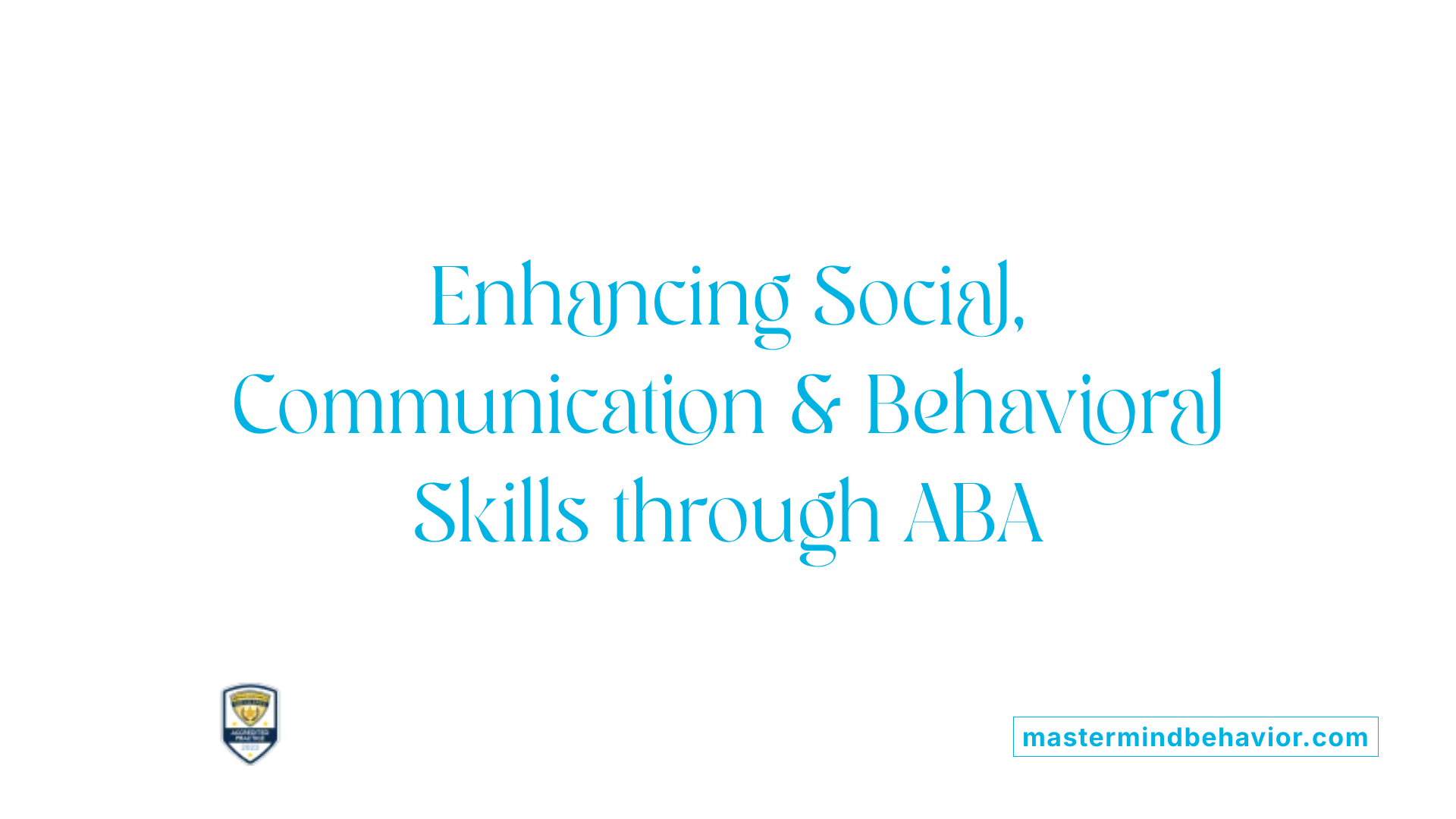
How does ABA therapy improve social skills, communication, and behavior to enhance learning outcomes?
ABA therapy is highly effective in helping children develop essential social, communication, and behavioral skills that support their ability to learn and grow. One of the primary focuses is teaching children to understand and interpret social cues, such as body language, facial expressions, and tone of voice. These cues are often broken down into smaller, manageable steps using techniques like modeling, shaping, and chaining, which guide children toward more complex social understanding.
In addition to recognizing social cues, ABA programs work on teaching important social skills such as initiating conversations, taking turns, sharing, and respecting personal boundaries. Role-playing activities and social stories are commonly used to provide realistic practice, helping children rehearse these interactions in a safe environment.
Improving communication is another core goal of ABA therapy. To achieve this, therapists employ methods to enhance speech and language, including naturalistic teaching, prompting, and reinforcement. For children who have difficulties with verbal communication, alternative systems like picture exchange communication or augmentative and alternative communication (AAC) devices are introduced to enable effective expression of needs and ideas.
Addressing problematic behaviors and teaching emotional regulation are integral parts of the therapy. ABA identifies the underlying causes of disruptive or harmful actions and replaces them with functional, appropriate responses. Children learn coping strategies to manage emotions like frustration, anger, or anxiety, which leads to better self-control.
A crucial aspect of ABA's success is ensuring that learned skills are applicable across different environments—home, school, and community settings. Family and educators are involved in therapy through training and collaborative efforts, ensuring consistency and reinforcing skills in real-life situations.
Role-playing scenarios and positive reinforcement play significant roles in teaching these skills. Children are motivated to participate and master desired behaviors when they receive praise, tangible rewards like stickers or tokens, and enjoy engaging activities.
In summary, ABA therapy enhances learning by systematically cultivating social interactions, improving communication methods, reducing behavioral challenges, and promoting generalization and independence. This comprehensive approach leads to better social engagement, emotional well-being, and educational success for children with autism.
The Attitudinal Benefits of ABA Therapy for Children with Autism
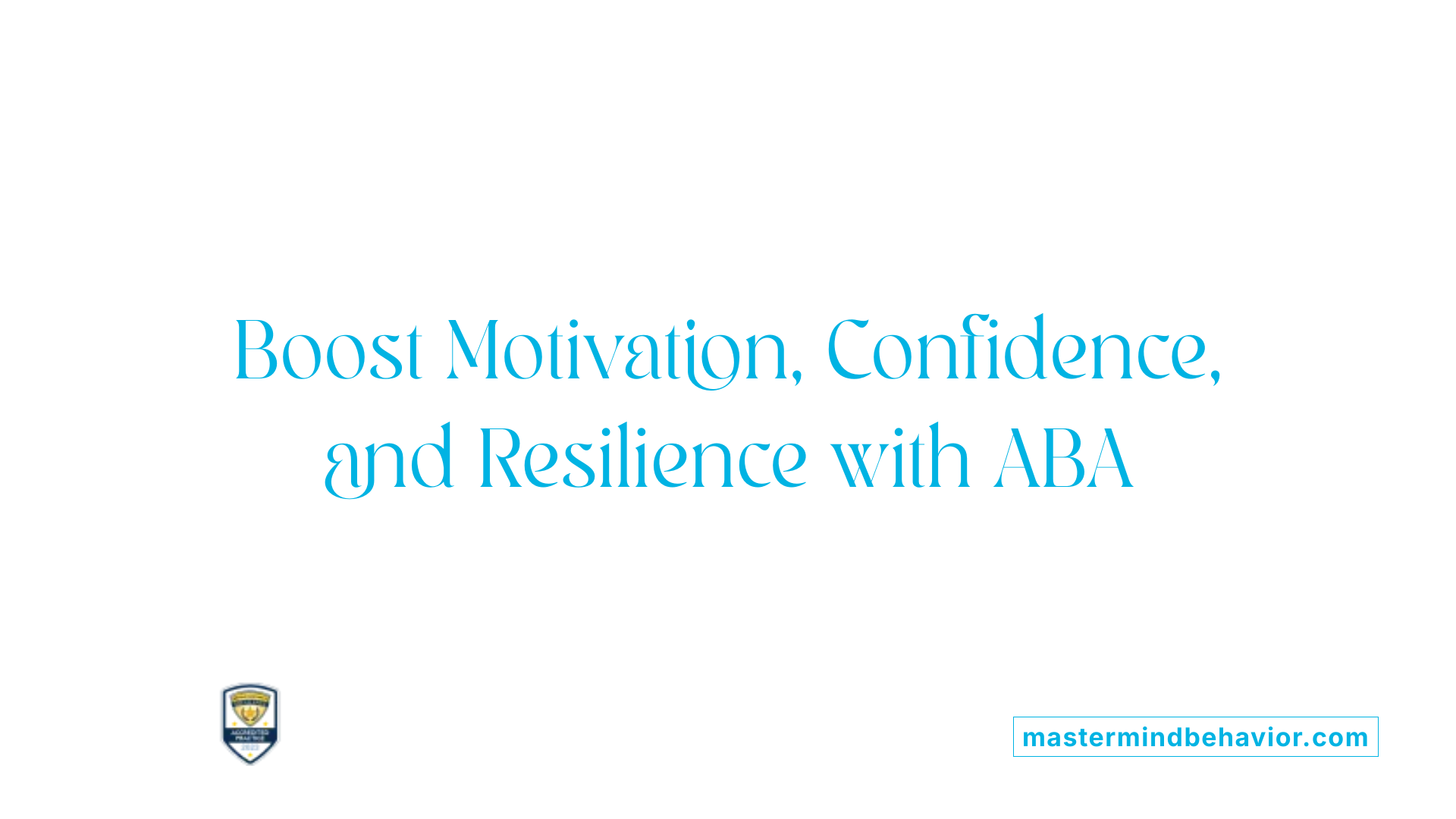
How does ABA therapy influence children's motivation and engagement?
ABA therapy significantly boosts motivation and active participation in children with autism. By using positive reinforcement techniques, such as rewarding desired behaviors with praise, tokens, or tangible items like stickers, children are encouraged to stay engaged and try new tasks. Personalized programs focus on helping children enjoy learning activities, turning challenges into successful experiences.
How does ABA help build confidence and promote a positive attitude towards learning?
Through consistent success and encouragement, ABA therapy helps children develop confidence in their abilities. When they learn new skills and receive praise for their efforts, they start to see themselves as capable learners. This positive feedback loop fosters a resilient attitude, making children more eager and willing to participate in educational activities.
What role does consistency play in promoting success and a positive learning attitude?
Regular practice and reinforcement are fundamental to ABA's effectiveness. The structured approach ensures children repeatedly experience successful outcomes, which reinforces their motivation. As they achieve milestones, their enthusiasm for learning grows, creating a cycle of success and increased independence.
How does ABA foster independence and resilience in children?
ABA techniques teach children practical skills for everyday life, such as self-care routines, communication, and problem-solving. As children master these skills through guided practice, they become more self-reliant and resilient. Learning to handle challenges confidently nurtures a positive outlook and perseverance in the face of new tasks.
What is the long-term impact of ABA on children's attitude toward education?
Over time, ABA therapy can transform children’s perspectives on learning by instilling a proactive and enthusiastic approach. As children become more competent and autonomous, they develop a genuine interest in school activities and new experiences. This enduring positive attitude towards education supports ongoing growth, lifelong learning, and overall well-being.
ABA Implementation in Educational Settings for Student Success
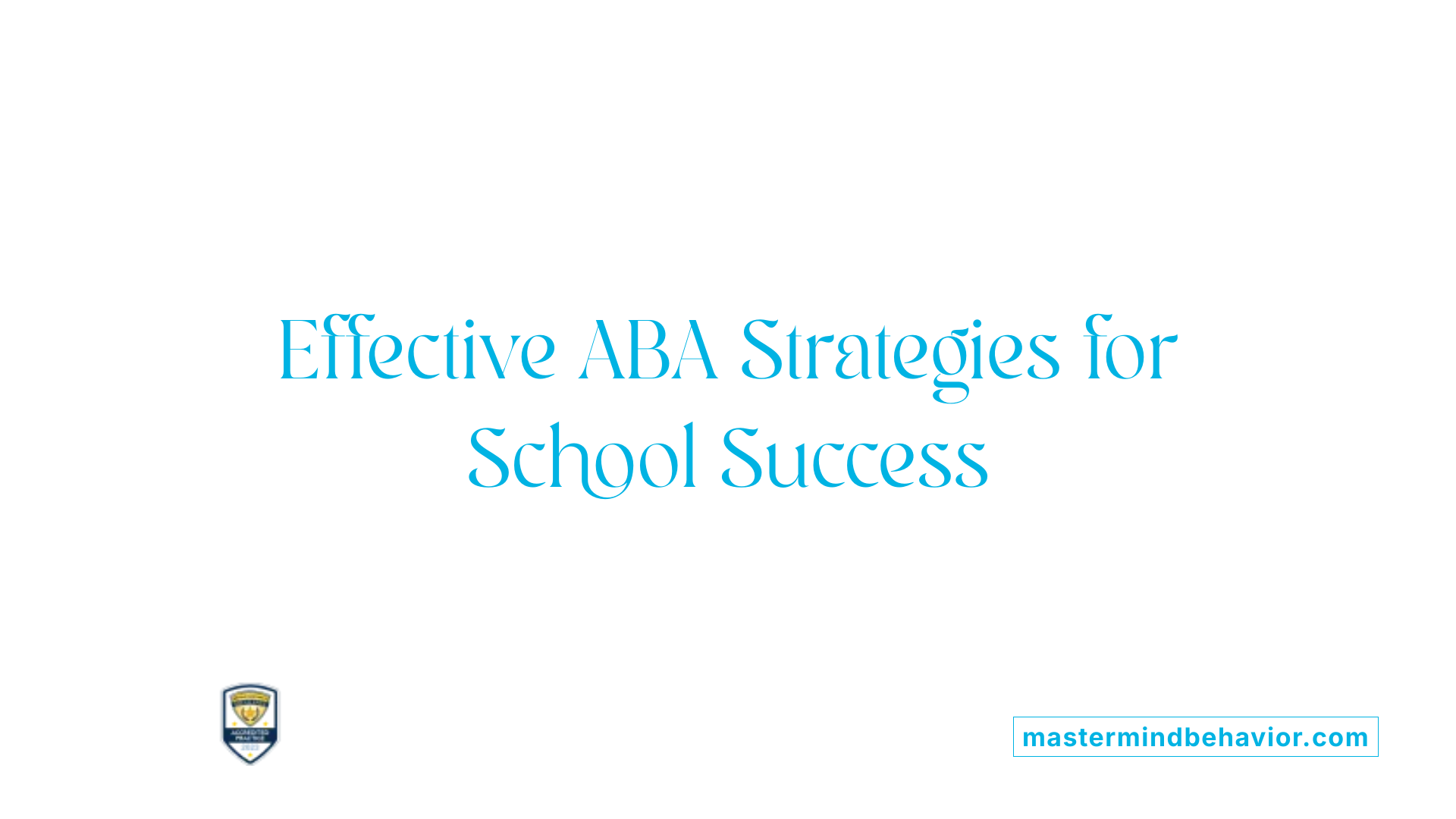
How is ABA therapy implemented in educational settings to promote children's learning success?
ABA therapy in schools is tailored to fit each child's unique learning needs. Educators, therapists, and families work together to develop personalized Behavior Intervention Plans (BIPs) that focus on both building skills and reducing challenging behaviors.
These plans incorporate proven techniques such as positive reinforcement, visual aids like schedules and visual cues, and task analysis to teach complex skills step by step. Teachers often use methods like Discrete Trial Training (DTT), where activities are broken into small, manageable tasks, and naturalistic teaching that integrates learning into everyday activities.
School-based ABA programs also emphasize routines and environmental structuring, creating predictable and supportive settings suited to each learner’s needs. Regular data collection—tracking progress and behavior changes—is a fundamental part of the process. This information guides ongoing adjustments to teaching strategies, ensuring the therapy remains effective.
Classrooms employing ABA techniques encourage social interaction, communication, and independence, helping children excel academically and socially. Transition strategies are also used to support students as they move between different school levels or environments, promoting generalization of skills across settings.
How does collaboration support ABA strategies in schools?
Collaboration among teachers, therapists, and families enhances consistency and reinforces learning across home and school. Teachers are trained to implement ABA strategies, ensuring that instruction is consistent and that progress is monitored systematically.
What role do reinforcement and visual supports play?
Positive reinforcement, such as praise or tangible rewards, motivates children to engage in desired behaviors. Visual supports, including schedules and cue cards, help children understand expectations and navigate routines with confidence.
How is progress tracked?
Progress measurement relies on collecting and analyzing data about behaviors and skill acquisition. This data informs decisions on adjusting interventions, ensuring each child’s program remains relevant and effective.
How does ABA support transitions and skill generalization?
ABA techniques help children acquire skills for different environments and situations. Teaching in varied settings ensures that learned behaviors transfer beyond the classroom, fostering independence in everyday activities such as self-care, social interactions, and academic tasks.
| Aspect | Approach | Purpose | Additional Notes |
|---|---|---|---|
| Customization | Individualized Behavior Plans | Address unique needs | Based on assessments and family input |
| Collaboration | Routine communication | Ensure consistency | Among educators, therapists, and families |
| Reinforcement | Rewards, praise | Increase desirable behaviors | Includes tangible and social reinforcers |
| Visual Supports | Schedules, cues | Enhance understanding | Supports independence and task completion |
| Data Monitoring | Progress tracking | Adjust interventions | Uses objective, measurable data |
| Generalization | Varied teaching contexts | Promote skill transfer | Across school, home, community |
Implementing ABA in educational environments offers a structured, evidence-based approach to supporting children’s growth. It emphasizes personalized strategies, consistent collaboration, and ongoing evaluation to foster success in both learning and everyday life.
Fostering Lifelong Learning and Independence
The integration of ABA therapy into children's educational journeys offers a pathway to not only acquiring essential skills but also developing a genuine love for learning. By tailoring approaches to each child's unique needs, promoting positive experiences, and encouraging independence, ABA creates an environment where children feel motivated, confident, and eager to explore new knowledge. As research continues to support ABA’s effectiveness, families, educators, and therapists are empowered to work collaboratively towards fostering resilient, enthusiastic learners prepared for lifelong success.
References
- Applied Behavior Analysis (ABA) | Autism Speaks
- How ABA therapy can help children with autism develop ...
- ABA and Child Development: How It Impacts Your Child's Growth
- 7 Surprising Benefits of ABA Therapy for Kids You Need to Know
- How ABA Therapy Can Help In School
- Preparing for the New School Year: School-Based ABA Therapy
- Benefits of ABA Therapy - Blue ABA
- How Can ABA Therapy Help a Child With Autism? | UTBS









